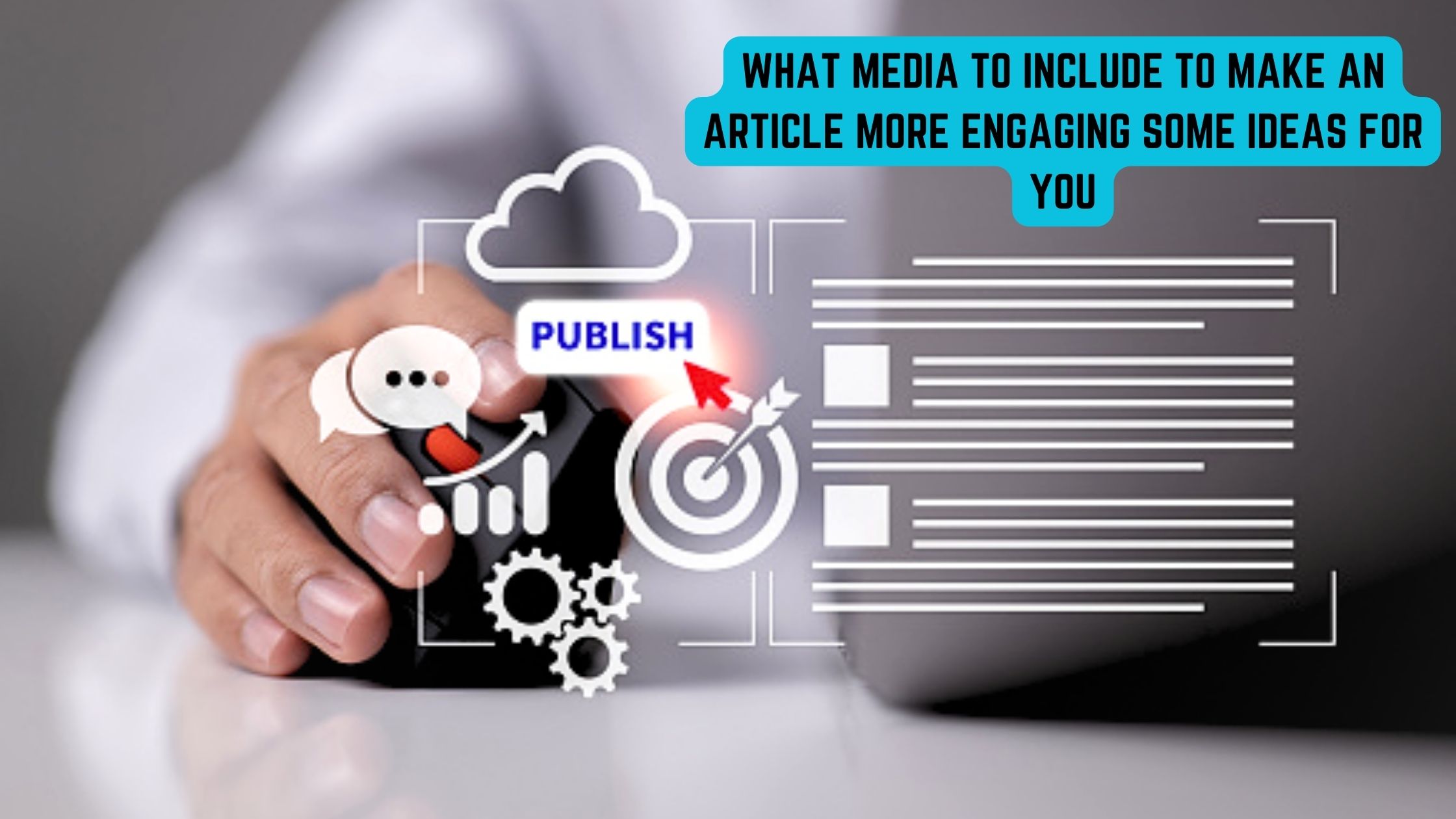What media to include to make an article more engaging? Some ideas for you

In today’s digital age, articles are not just about words on a page. They are about capturing the reader’s attention, engaging them, and keeping them on the page.
Writing an article is not just about putting words on a page. You also need to think about how to make your article more engaging for your readers. One way to do that is to include different types of media, such as images, videos, audio clips, infographics, charts, graphs, etc.
Media can help you illustrate your points, provide visual interest, break up long blocks of text, and appeal to different learning styles. But how do you choose what media to include and how to use them effectively? Here are some ideas for you.
Ideas

- Images: Images are one of the most common and powerful types of media you can use in your article. They can capture attention, evoke emotions, show examples, and add personality to your writing.
However, you should not use images randomly or excessively. You should only use images that are relevant to your topic, high-quality, and legally sourced.
You should also optimize your images for web performance and accessibility by resizing them appropriately, compressing them, adding alt text, and using captions. - Videos: Videos are another popular and engaging type of media you can use in your article. They can demonstrate processes, explain concepts, tell stories, and showcase testimonials. However, you should not use videos that are too long, too many, or too distracting.
You should only use videos that are relevant to your topic, high-quality, and legally sourced. You should also optimize your videos for web performance and accessibility by embedding them from a reliable platform (such as YouTube or Vimeo), adding subtitles or transcripts, and using thumbnails and descriptions. - Audio clips: Audio clips are a less common but still effective type of media you can use in your article. They can add variety, authenticity, and intimacy to your writing. They can also appeal to auditory learners who prefer listening over reading. However, you should not use audio clips that are too long, too many, or too noisy. You should only use audio clips that are relevant to your topic, high-quality, and legally sourced.
You should also optimize your audio clips for web performance and accessibility by embedding them from a reliable platform (such as SoundCloud or Spotify), adding subtitles or transcripts, and using controls and labels. - Infographics: Infographics are a great way to present complex or large amounts of data in a visual and concise way. They can help you summarize your main points, highlight key facts or statistics, compare or contrast different options or scenarios, and show trends or patterns. However, you should not use infographics that are too cluttered, colorful, or confusing.
You should only use infographics that are relevant to your topic, high-quality, and legally sourced. You should also optimize your infographics for web performance and accessibility by resizing them appropriately, compressing them, adding alt text, and using captions. - Charts and graphs: Charts and graphs are another useful way to display data in a visual and easy-to-understand way. They can help you support your arguments, illustrate relationships or proportions, show changes over time or space, and reveal insights or outliers. However, you should not use charts and graphs that are too complicated, too similar, or too misleading.
You should only use charts and graphs that are relevant to your topic, high-quality, and legally sourced. You should also optimize your charts and graphs for web performance and accessibility by choosing the right type of chart or graph for your data (such as pie charts for percentages or line graphs for trends), labeling them clearly (with titles, axes, legends, and units), adding alt text, and using captions.
Conclusion
As you can see, incorporating various media types in your article can help make it more engaging and increase readers’ interest. You can include many media types in your article to make it more engaging for your readers.
However, you should never forget that media is not a substitute for good writing. You should still focus on creating clear, coherent, and compelling content that delivers value to your audience. Media is just a tool to enhance your message, not replace it.







Follow